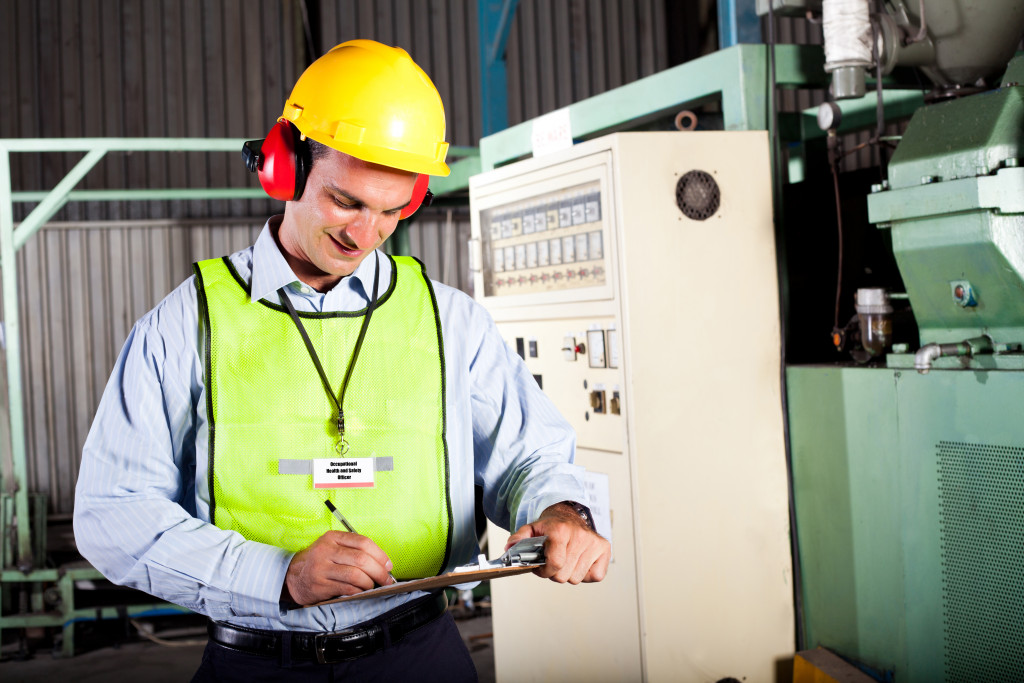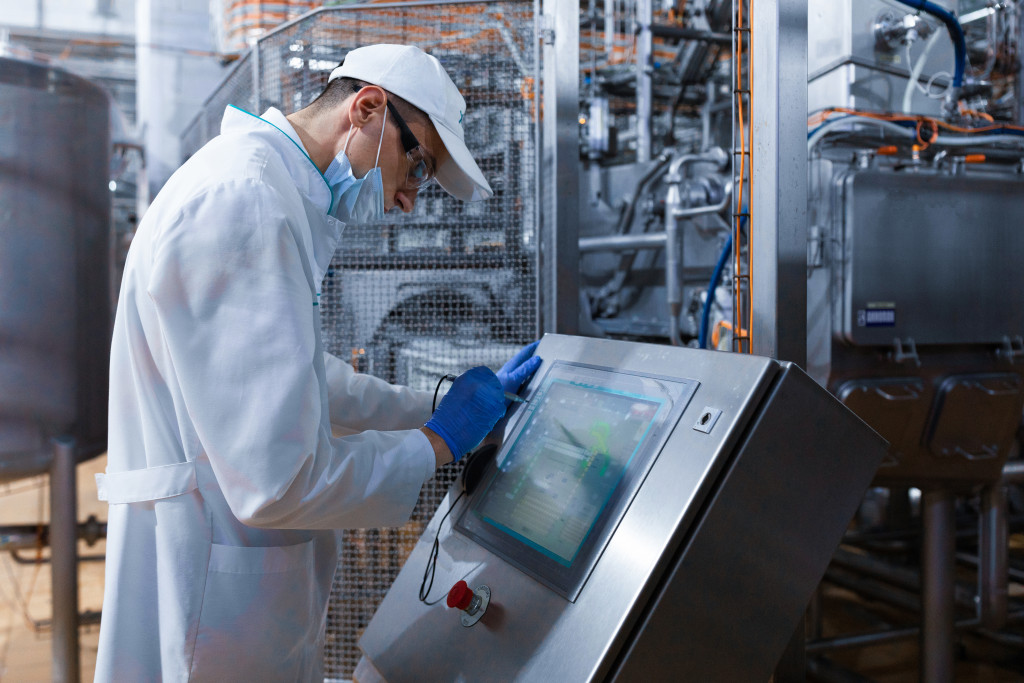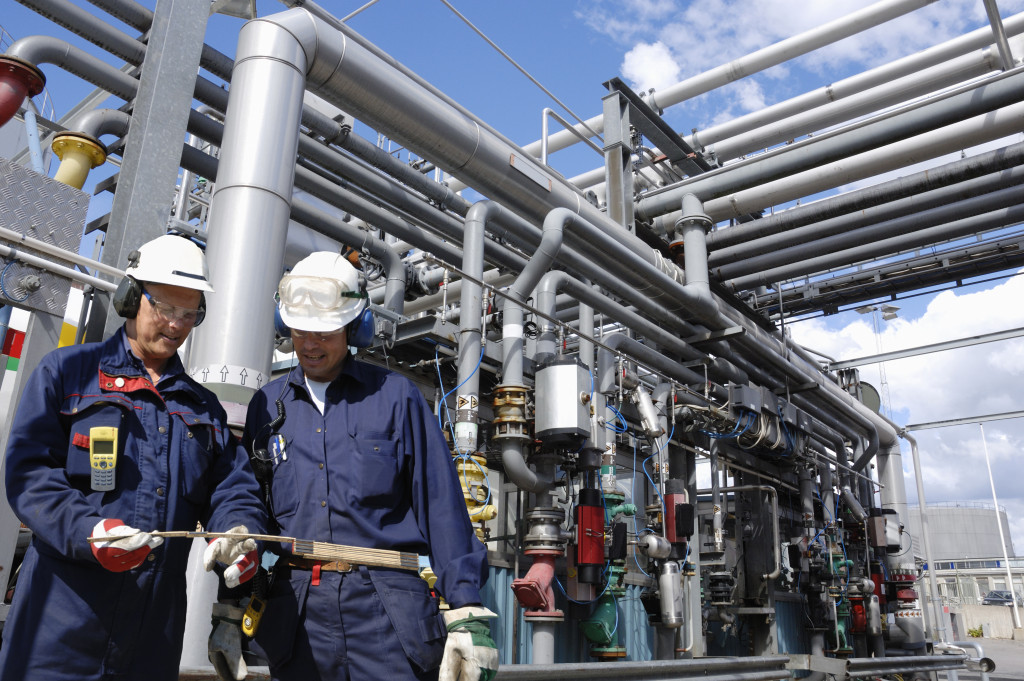• Establish clear safety and quality protocols to ensure everyone understands their role in keeping the workplace safe.
• Invest in sensors and safety systems to detect potential hazards or irregularities before they become major problems.
• Use automation whenever possible to reduce human error, increase productivity, and improve quality control.
• Perform regular inspections and maintenance to maintain all machinery and equipment properly.
Quality and safety standards are essential components of any industrial facility. With the proper protocols and systems in place, you can ensure that your employees, customers, and products are safe from potential hazards. Here are a few tips that can help you out.
Establish Clear Safety And Quality Protocols
Establishing clear protocols is the most crucial step to ensure quality and safety in your industrial facility. Ensure everyone understands the basic rules that must be followed while on the job and what constitutes a hazard or an unsafe condition.
Ensure that all employees are trained to recognize potentially hazardous situations and know how to respond appropriately. For instance, make sure they know how to properly use equipment, handle hazardous materials, and stay safe when working with electricity.
Additionally, it’s vital to ensure employees know what steps they should take if they encounter something unexpected or unusual in the workplace. This includes alerting their supervisor or another responsible party right away.

Invest in Sensors and Safety Systems
Investing in sensors and safety systems can help you detect potential issues before they become major problems. These devices are designed to ensure proper precautions when working with sensitive equipment or materials. Here are some examples:
Photoelectric Sensors
Investing in efficient photoelectric sensors that detect the presence of an object, measure its distance, and analyze its characteristics can be used to detect hazardous conditions in industrial facilities. This includes smoke, combustible gases, and foreign objects like debris or loose materials. Additionally, they can detect temperature or humidity changes, alerting you to potential safety issues.
Motion Detectors
Motion detectors can be used to detect unauthorized access to areas or movements in the workplace. This can help you identify any potential intruders or suspicious activity that could lead to an unfortunate incident. Additionally, these systems can also be set up to trigger alarms if there is any unexpected motion in restricted areas.
Pressure and Leak Sensors
Pressure and leak sensors can help you detect sudden drops in pressure and the presence of hazardous gases or liquids. These systems can be used to monitor fuel tanks or pipelines for leaks or any other irregularities that could lead to an accident.
Use Automation Whenever Possible
Automation can help you increase productivity while ensuring that safety protocols are always followed. Using automated machinery can reduce human error and minimize potential risks associated with manual labor processes. Here are some areas you can automate:
Operations & Processes
Automating repetitive processes can help you eliminate potential human errors that could lead to mistakes, damages, and injuries. Additionally, automated systems are more reliable and efficient than manual labor, allowing you to increase productivity while also ensuring quality standards are met.
Machine Diagnostics
Machine vision technology, such as 3D scanning and image recognition, can be used to detect any irregularities with your machines. This can help you identify potential problems before they lead to malfunctions or accidents. Additionally, it can also be used for predictive maintenance and analyzing the performance of complex systems.
Data Analysis
Additionally, automated systems often provide detailed data logs, which can be used to track production performance over time and identify areas where improvements could be made for better efficiency or quality control. Companies can also use this data to analyze potential safety risks and how to solve them.

Perform Regular Inspections And Maintenance
Regular inspections of your equipment and facilities will help ensure everything is functioning correctly and meet all necessary safety and quality assurance regulations. Additionally, performing routine maintenance on any machinery or equipment used in the process will help extend its lifespan.
This also minimizes the potential risks associated with malfunctioning parts or improper operation due to negligence or lack of maintenance over time. For starters, regularly check on all electrical wiring, hydraulic systems, and other moving parts.
It’s essential to have a dedicated team responsible for regularly inspecting machines to address any issues quickly before they become serious problems. Train them to recognize any potential issues and how to resolve them.
Quality and safety are essential components of any industrial facility—and it’s up to business owners, entrepreneurs, and company leaders to ensure these standards are consistently met throughout their operations. From establishing clear protocols to automating processes whenever possible, there are many different steps you can take toward achieving greater levels of quality assurance at your industrial facility.



